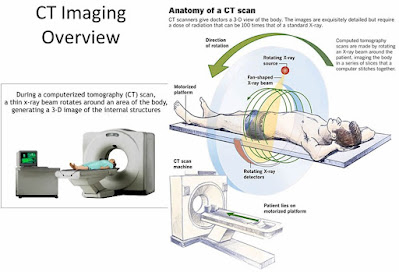Benefits:
An MRI scanner can be used to make images of any part of body(e.g. had, joint, abdomen, legs etc.), in an imaging direction. MRI provides better soft tissue contrast than CT scan and can differentiate better between fat, water, muscle and other soft tissues than CT scan(CT is usually better at imaging bones). These images provide information to physicians and can be useful in diagnosing a wide variety of disease and conditions.
Risks:
MRI images are made without using any ionizing radiation, so patients are not exposed to the harmful effects of ionizing radiation. But, while there are no known health hazards from temporary exposure to MRI environment, the MRI environment involves a strong, static magnetic field, a magnetic field that changes with time(pulsed gradient field), and radiofrequency energy, each of which carry specific safety concerns:
- The strong, static magnetic field will attract magnetic objects(from small items such as keys and cell phones, to large items such as oxygen tanks and floor buffers) and may cause damage to scanner or injury, to the patient or medical professionals if those objects become projectiles. Careful screening of people and objects entering the MRI environment is critical to ensure that nothing enters the magnet area that may become a projectile.
- The magnetic field that changes with time cause loud knocking noises which may harm hearing of patient if adequate ear protection s not used. They may also cause peripheral muscle or nerve stimulation that may feel like a twitching sensation.
- The radiofrequency energy used during MRI scan could lead to heating of body. The potential for heating is greater during long MRI examinations.
The use of gadolinium based contrast agents(GBCAs) also carries some risks, including side effects such as allergic reactions to the contrast agent. See GBCAs for more information.
Some patients find the inside of scanner to be uncomfortably small and may experience claustrophobia . Imaging in an open MRI scanner may be option for some patients, bot not all MRI systems can perform all examinations.
To produce good quality images, patients must generally remain very still throughout the entire MRI procedure. Infants, small children and other patients who are unable to lay still may needed to sedated or anesthetized for the procedure. Sedation and anesthesia carry risk not specific too MRI procedure, such as slowed or difficult breathing, and low blood pressure.
.jpg)





